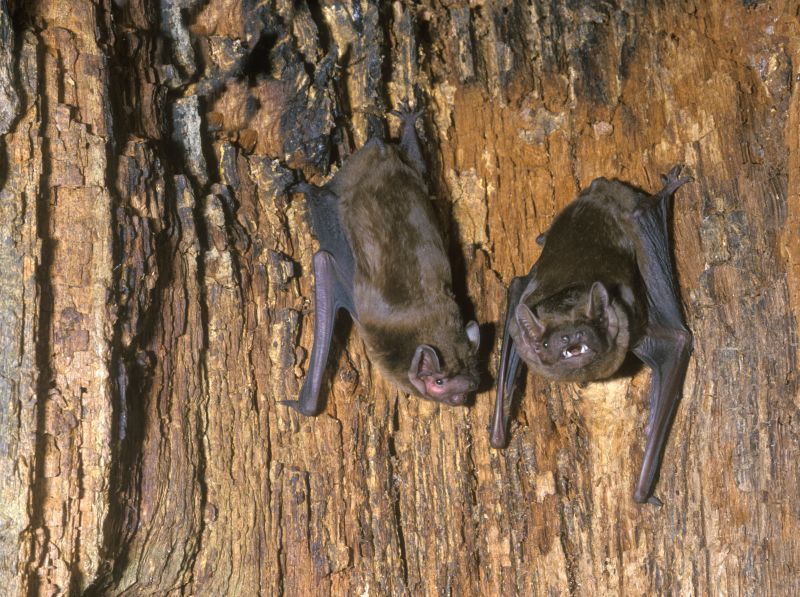Roosts in trees
Most bats in the UK evolved to roost in trees. Around three quarters of British bat species are known to roost in trees. The remaining species tend to favour human-made structures because of a lack of suitable and available tree habitat.
Trees provide shelter and attract a diverse range of insect species for bats to feed on. Since bats are not able to bore holes or make nests, they use whatever gaps are available – including cavities and crevices made by other animals, the natural decay of the wood or arboricultural methods.

Bats use different parts of the tree for different reasons, depending on the time of year and temperature. For example, in the summer bats might use the higher canopy sites to have their young in warmer temperatures. In winter, they might move deeper and lower into the tree to hibernate. Male bats and non-breeding females tend to prefer cooler conditions throughout the year. Breeding females prefer warmer roosts in spring and summer, when raising their baby (pup) places high demands on their energy levels. Breeding females cluster together to retain body heat, but they also get through this challenging time by gaining 'free' heat from tree roosts in two ways:
- Selecting naturally warm sites, such as sheltered trees receiving some sunshine during the day;
- Selecting highly insulated sites, such as a tree hole with a small space and thick wood.
Trees such as oak, beech and ash are particularly suitable for bats, but any woodland or tree has potential for a bat roost – especially if it has cavities in the trunk or branches, woodpecker holes, loose bark, cracks, splits and thick ivy.
For more information on how bats use trees, advice on what to do if you have concerns about tree work or are planning to fell or prune a tree, download our useful Bats & Trees leaflet.
A collaborative effort between BCT and the Mammal Next Door has taken the Bats & Trees leaflet diagram to produce an electronic poster to help illustrate how important trees are for bat species.
Download our Bats and Trees information leaflet
Download our Bats and Trees poster (in collaboration with Mammal Next Door)
PRF Position Statement Oct 2019 features (October 2019)




